Top Fitness Equipment Makers Change With the Times
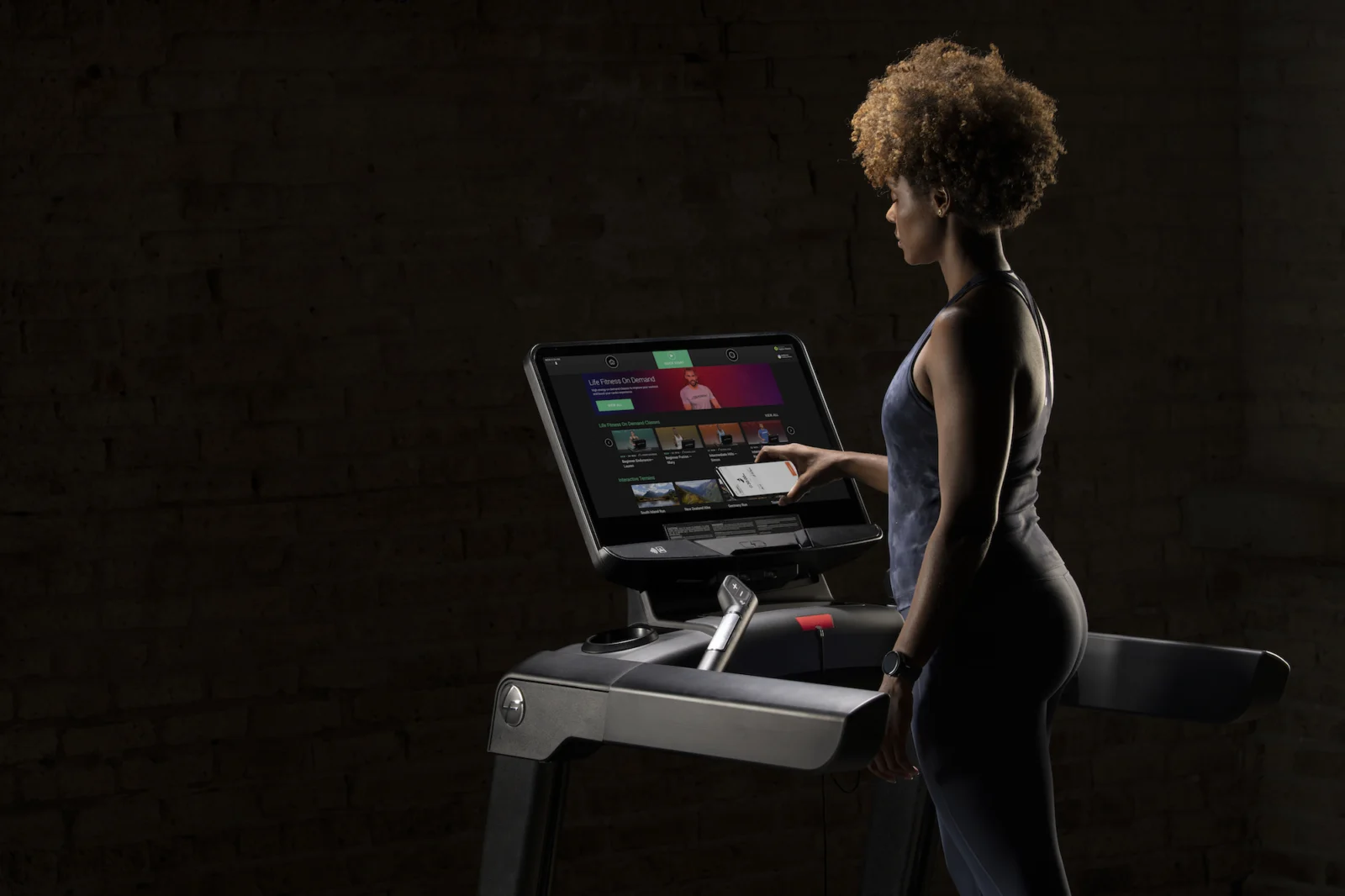
Execs from Life Fitness, EGYM, Concept2 and iFIT share their thoughts and predictions on the future of fitness equipment
By ensuring a fitness facility or gym has the latest equipment and diverse options, gyms can be competitive and attract and retain members, especially those without access to cutting-edge hardware at home.
Athletech News spoke with four leading fitness equipment companies, Life Fitness, iFIT/Freemotion, EGYM and Concept2, to learn about their products and predictions for how gyms and fitness facilities will evolve in the coming years.
Based on our conversations with these four top brands, fitness operators wanting to have an edge over the competition must offer top-tier strength training and user-personalized connected equipment, bridge the gap between in-gym and home-based workouts and build a robust community.
Life Fitness Embraces Functional Training, Cardio Content
Founded in 1977, Life Fitness has long been a staple in the industry, offering strength, cardio and accessories under its signature Life Fitness brand as well as Hammer Strength.
The fitness equipment maker recently launched LFX, a functional training experience combining equipment with programming, education and digital experiences to give gyms an all-in-one solution. Such systems are a necessity, as Life Fitness notes workouts like Olympic weightlifting, kettlebells and calisthenics are increasing in popularity with gym goers.
“LFX was born as a way to help facilities create these spaces, and then actually program the spaces to bring them to life for their members,” says Leigh Wierichs, global training and education manager at Life Fitness.
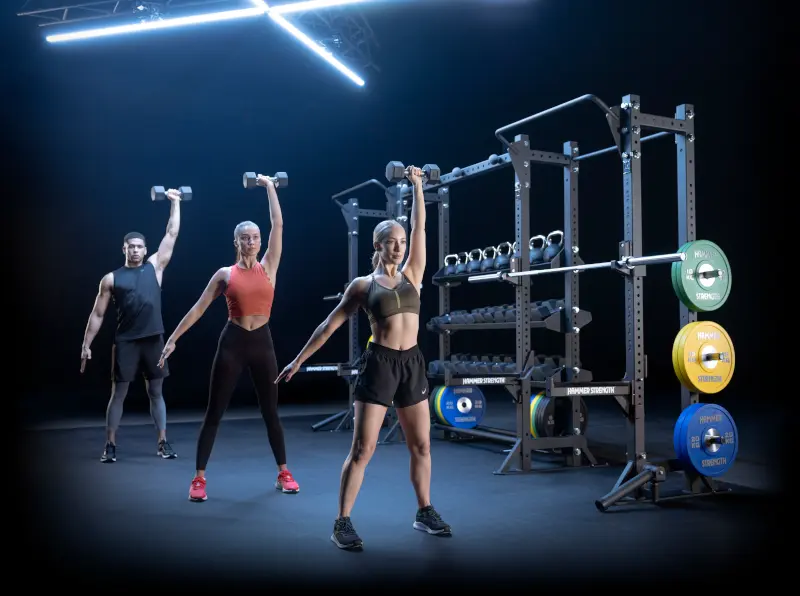
With LFX, gyms can select from seven pre-designed equipment packages, all containing a combination of Life Fitness and Hammer Strength functional training equipment.
“Our customers wanted to optimize the functional training experience for their exercisers, and we wanted to empower them with easy-to-implement solutions,” she said.
Life Fitness also unveiled the Discover SE4 cardio console, allowing facilities to boost member engagement with immersive entertainment, connectivity, workout content and branding.
“SE4 was inspired by research with exercisers and customers with the goal of creating truly immersive experiences to drive member engagement,” said Nick Yogerst, Life Fitness product director, consoles. “We wanted to bring the technologies that consumers expect and utilize in their daily lives into the fitness facility.”
The SE4 is available across the line of Life Fitness Integrity+ and Aspire cardio machines.
For Concept2, Quality Is Paramount
Peter Dreissigacker, who founded Concept2 in 1976 alongside his brother Dick, has been fully immersed in sport and fitness, launching Concept2 out of his love of rowing. The Vermont-based company went on to create the RowErg, an indoor rower, the SkiErg, a cross-country ski trainer and the BikeErg, a sport-based ergometer.
Dreissigacker says the ideal “gym of the future” includes three simple things: strength, cardio and Wi-Fi.
“There will always be weights, perhaps along with some other kind of strength apparatus,” Dreissigacker said. “There will always be cardio to get people moving and (if they don’t already have it) the ‘gym of the future’ will have Wi-Fi to let people connect to their chosen ‘tribe’ and personal devices will be used in the gym to connect to a favorite app for training advice, recording their workouts in a log, entertainment and connecting to other users.”
As for what gives Concept2 the edge over other fitness equipment providers, Dreissigacker emphasizes the brand’s sport-based conception.
“We came to this industry from the sport (rowing) and were focusing on the requirements of the sport and not the fitness industry,” he said. “One of the things of top importance to us was that every RowErg out there would give identical results all the time, which sounds simple, but there is a lot involved to ensure that happens. We have heard many times the RowErg referred to as ‘The Gold Standard.’”
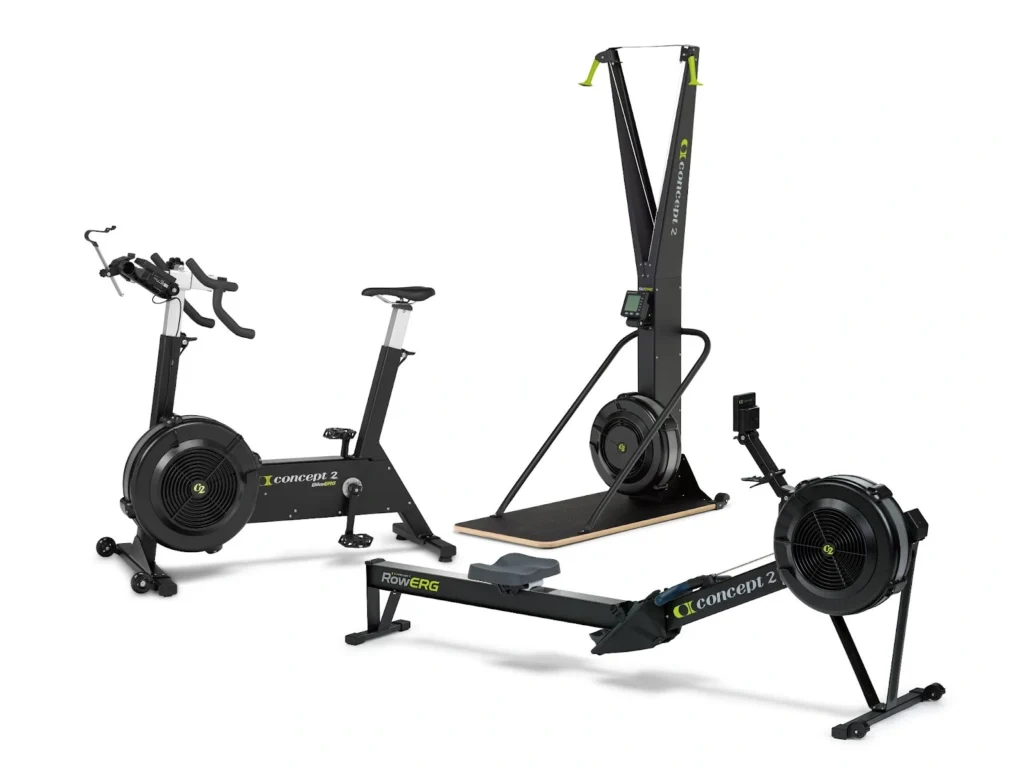
Concept2 has come a significant way from producing a paper-based ranking system of times for specific events on the RowErg, notes Dreissigacker.
“As the world moved to the web, more opportunities became available for making connections and driving the ‘Concept2 Culture,’” he said. “Now, there is racing over the internet, online ranking data and training with partners and even strangers around the world in real-time, all part of our free app.”
Just as sports and fitness can drive fellowship, Dreissigacker believes fitness consumers are looking for equipment that can stand the test of time while providing a sense of community.
“There is certainly a portion of fitness consumers who want to be connected to others and I think consumers want to have that ability,” he said. “Some things don’t change. People want something that feels good to use, and they want something that has the quality to last.”
iFIT, Freemotion Go All-In on Connected Fitness
Freemotion, the commercial equipment branch of Utah-based iFIT, is reinvigorating the cardio experience at gyms with its 22 Series, a perfect blend of content and hardware that meets the needs of modern fitness operators.
The 22 Series features six connected cardio machines: an incline trainer, Reflex treadmill, elliptical and three bikes, all equipped with HD touchscreen displays and access to iFIT workout content.
“The conversation (with fitness operators) has shifted from, ‘I need to replace my treadmills’ to ‘I need a digital solution,’” explains Peggy Vo, director of global marketing for Freemotion.
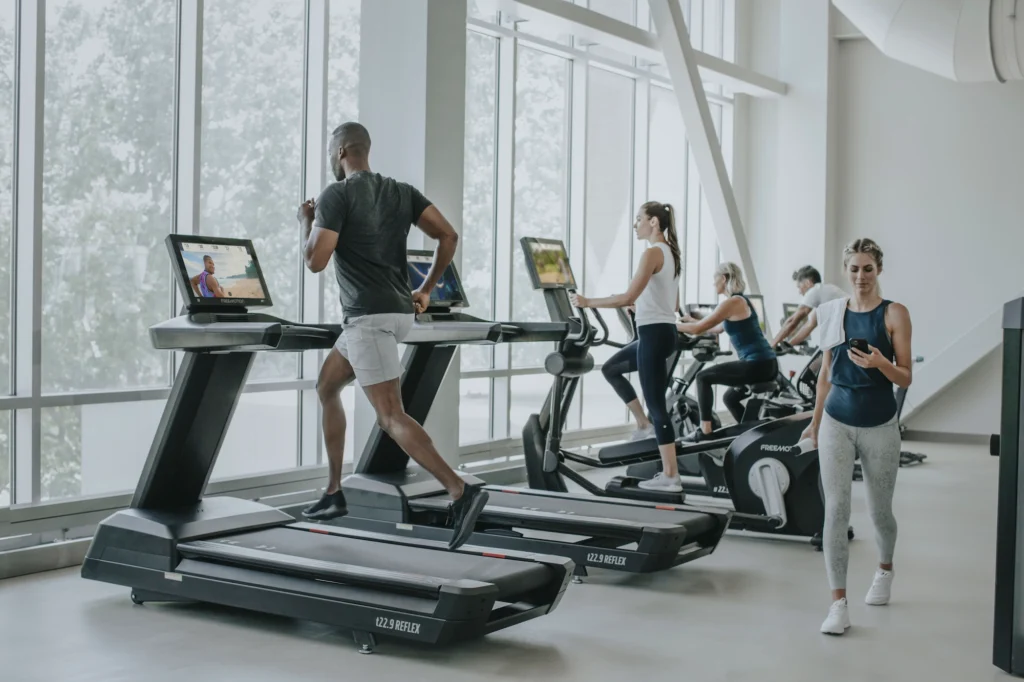
The 22 Series allows members to access iFIT’s vast library of coach-led workouts and takes it a step further with auto-adjusting technology, where speed and incline change depending on what’s happening on-screen. Users also can intervene to adjust the hardware manually.
“We like to call it ‘auto-magic,’” Vo says. “If you’re doing a climbing workout the incline is automatically going to climb as the terrain is climbing. As an exerciser, you don’t have to think about anything.”
Member retention has always been the biggest hurdle facing fitness operators, notes Vo, but with Freemotion and iFIT, members using in-gym Freemotion equipment can continue outside of the gym with the iFIT app.
“This is a perfect solution to keep up with your members who want to work out outside of the gym,” Vo said. “Members can do a workout series on Freemotion equipment (in-facility), but if they can’t come in next week for whatever reason, say they’re traveling, they can go to any hotel gym and run the iFIT program on another treadmill.”
Freemotion offers gyms the option of purchasing membership-wide access to an iFIT subscription, boosting the member experience.
As Vo points out, it’s imperative that fitness operators embrace that some fitness consumers have adopted a hybrid approach.
“We tell our customers, ‘You need to have a digital solution because you’re going to lose your members if not,’” she said. “You want them to use your digital solution and not someone else’s.”
EGYM Is the Leader in Smart Fitness
EGYM, a Munich-based global fitness technology company catering to commercial and boutique segments, has had a stellar 2023, receiving $225 million in growth capital and nailing its first profitable year.
Fifteen thousand facilities worldwide use EGYM’s products and services, such as its Fitness Hub, personalized Smart Strength trainers, Smart Cardio and digital fitness solution Mobile Packs.
Since the fit tech company has made exercising smart and efficient for operators, EGYM’s chief product officer, John Ford, envisions the “gym of the future” touting interconnected and interactive cardio and strength machines.
“Analog tools will (still) be popular, but the experience on these analog tools will also be digitally supported for users who desire the support,” he says.
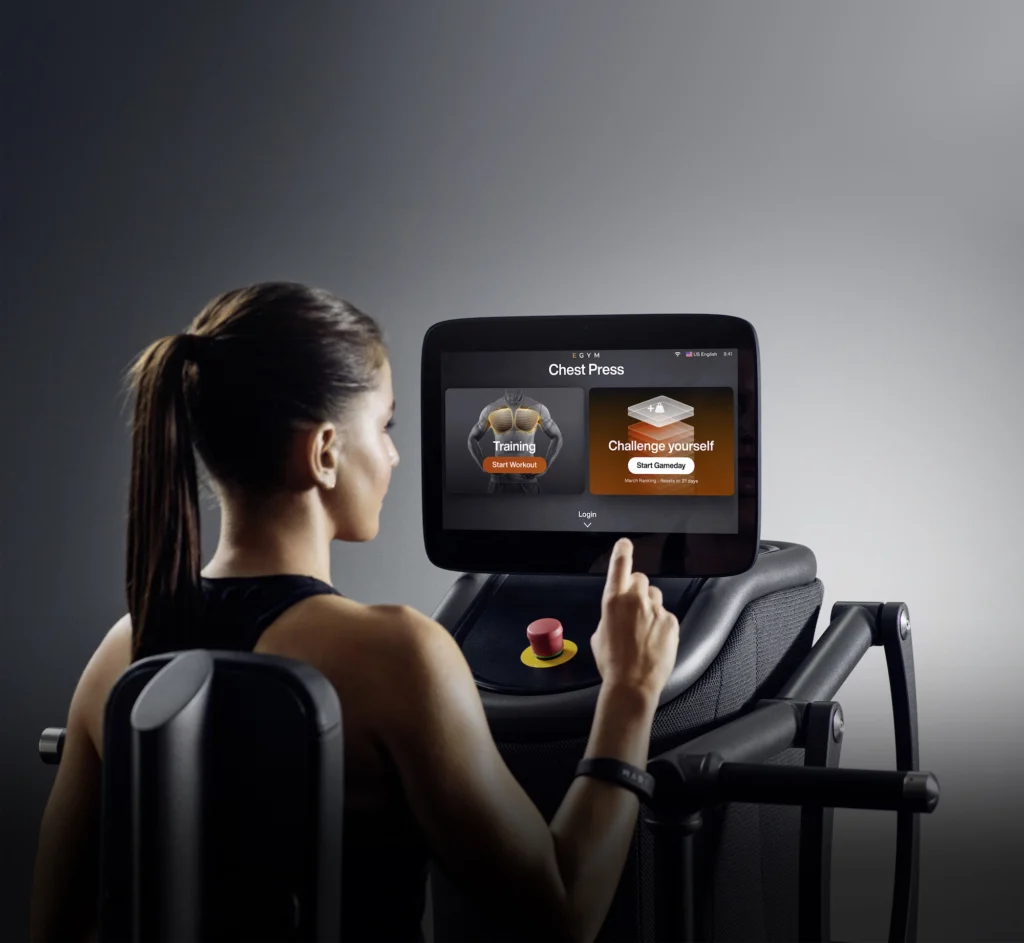
Although EGYM released an eye-opening survey this fall revealing that many gyms haven’t fully adopted digital technology, Ford predicts fitness operators will strive to make seismic shifts in 2024.
“We have seen a big change in awareness and interest in EGYM products in newer markets this past year, across all gym types and segments,” he shared.
Of all of EGYM’s offerings, Ford points to the fit tech brand’s classic line in Circle Mode (a synchronized mode for guided and time-efficient workouts) as having stood the test of time.
“Circuits have always been an effective and efficient way to get beginners training with less intimidation,” Ford said. “EGYM first enhanced this model with digital guidance and motivation over ten years ago, and to this day, 50% of our machines are installed in this mode to engage and guide new exercisers to success.”
He says EGYM’s key differentiator is its focus on digital equipment, ready to provide an entire ecosystem for operators who desire an entirely tech-first concept.
“There are competitors in the space that offer everything you might find in a gym,” Ford said. “They might have hundreds of analog products and a subset of true tech products. We believe it’s a lot easier to focus on great tech-driven experiences because 100% of our products are technology products.”
Ford also points to the increased recognition of strength training benefits and how that is changing fitness operators’ needs.
“Cardio floors are shrinking everywhere, and strength trainers are now a solid majority in gyms,” he said. “Groups that traditionally strength trained less, such as women, are breaking the old norms and becoming lifters. It’s great to see the modality getting the appreciation it deserves.”



